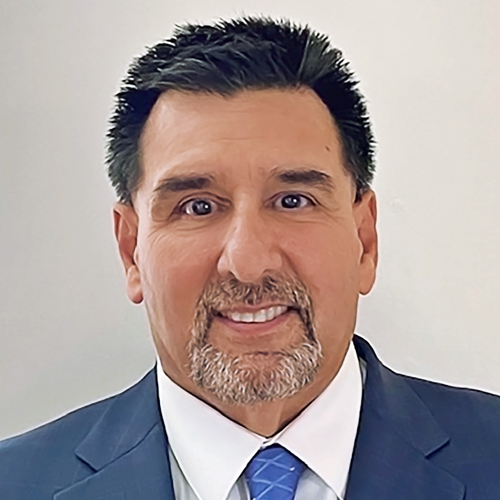Supply chain leaders discuss how their organizations are navigating the backlogs, delays and disruptions.
January 2022 – The Journal of Healthcare Contracting

Amid a striking uptick in Covid patients due to the latest surge over the holidays, health systems are also facing extended medical supply shortages and continuing to care for other patients. These supply deficits are impacting many necessities of care and are driven by raw material shortfalls, port backlogs, shipping delays and truck driver shortages for transporting goods. They include everything from crutches to syringes, needles, tubing, gloves catheters, drapes for surgery, suction canisters for medical waste, urine cups and more.
Supply shortages are so severe that some health systems have even asked their local communities for donations of gently used crutches and other medical equipment. Raw material shortfalls like aluminum for crutches, for example, impede the production of medical devices as well as labor shortages related to Covid sweeping through manufacturing facilities. These issues were acerbated by consumer demand during the holidays that assured supply chain problems were sustained, and parts needed for medical devices were used in other consumer products.

Amanda Chawla 
Erik Walerius 
George Godfrey 
Steve Faup
The Journal of Healthcare Contracting (JHC) surveyed supply chain leaders from health systems about the medical supply shortages.
JHC: Have you experienced any of these disruptions and shortages? If so, how are you mitigating them?
Amanda Chawla, VP and Chief Supply Chain Officer of Stanford Health Care (Stanford, CA): Yes, anyone who works in the supply chain can attest to its impact on the way we operate in how we prepare and respond. Supply disruptions are not a matter of IF anymore, but a matter of WHEN. Affected categories have been wide ranging. The most notable include solutions, pediatric-specific supplies, core lab supplies, sterile surgical gloves and other products like suction canisters, DME (durable medical equipment) and OR specific. Some categories have limited options on alternatives.
Our number of product disruptions on a monthly basis is approximately 1,300. Daily, we receive about 80% of our orders from distributors. However, through the phenomenal work of our shortages task force and teams, including the substitution task force, the empty bin rate at the PAR locations is only 2% with no viable substitute – either due to clinical requirement or lack of product reliability.
Stanford has a multipronged approach in response to, mitigation of, and preparation for disruptions. From a dedicated resiliency team to warehouse and stockpiling strategies, which are least preferred, to an operating daily and clinical integration infrastructure. Stanford Supply Chain has a cross-functional, intra-supply chain team that incorporates every department within the supply chain organization, along with our primary distributor, into a shortage’s task force. There are two external interactive taskforces: one known as the Substitution Taskforce (STF) and the other as the Supply Chain Utilization Practice Taskforce (SCUP). These teams meet regularly to support and manage the response to disruptions.
Steve Faup, Divisional Director, Supply Chain of Capital Health (Trenton, NJ): We’ve experienced all of [these disruptions and shortages] and more. For example, a vendor was working on a follow-up to a delivery problem and admitted the shipment was in transit at a staging center 600 miles away but there were no drivers available. It’s apparent there is frustration realized by everyone involved.
We have grown from an average of 20 backorders per day in August to up to 40 per day now. Sometimes [substitutes] are available, but not necessarily through the original vendor of choice. Also, substitutes can create a change in process or practice, which might require clinical education.
We work with our customers to identify options and utilize all our internal supply chain resources to cycle through the vendors for products. We developed some new vendor relationships during the past 18 months that were not part of the typical healthcare supply chain, and we’ve continued to include them as resources. And a couple of our vendors have committed to a longer term pipeline for specific products.
George Godfrey, Corporate VP and Chief Supply Chain Officer of Baptist Health (South Florida): We have been experiencing these types of shortages since fall 2020. The shortages have been in all areas. It has affected mostly overseas production of finished goods and we are notified of approximately 20 to 25 distinct backorders per day.
We are closely monitoring on-hand, available stock within our distribution center, while maintaining a data set of clinically approved substitutes and finding alternative sourcing throughout multiple avenues.
Erik Walerius, Chief Supply Chain Officer of UW Medicine (Seattle, WA): Hundreds of products continue to be on allocation or backordered across multiple categories including bedside care, when items drop off and new ones are added. Currently, we have 450 backordered items. Substitutes are available for many but not all items.
JHC: Have you asked clinicians to conserve supplies?
Chawla, Stanford Health Care: Yes, particularly in instances where clinical equivalent substitutes are not reliable or not available. Bringing about awareness fosters partnerships and helps to eliminate any waste while promoting sustainability.
Faup, Capital Health: Yes [we have]. Some good examples include targeted processes like utilizing vacutainers for only what is necessary during a blood draw and avoiding wasted tubes. Past practice included filling a predetermined volume of tubes as backups. The pharmacy department has designated specific departments to receive vendor-supplied prefilled syringes based on the need for longer expiration dating. Pharmacy staff is building prefills for departments that will use them in a shorter time period.
These options are available and supported because of strong clinical leadership.
Godfrey, Baptist Health: Not in all instances of product shortages. We did put conservation strategies in place early in the pandemic for PPE and other specific product shortages. However, our hospitals demonstrate an absolute need for clinical supply with each request for product, so we do our best to find another avenue to source product whenever possible and only use restricted ordering in the most severe of shortages.
Walerius, UW Medicine: Yes, via committee decisions in partnership with members representing clinicians, clinical education, infection prevention and supply chain. Conservation tactics were needed when substitutes were not deemed clinically acceptable.
JHC: Have you paid for expedited shipping due to long lead times?
Chawla, Stanford Health Care: Yes. With volume increases and the lack of reliable, proactive information on disruptions, Stanford has had to respond at times with rush and expedited orders.
Faup, Capital Health: [We have] since March 2020. While most PPE supplies have become more readily available, the supply and demand issues with other items has forced the continued practice of expedited shipping. The product shortages are unpredictable. A steadily flowing item through our supply distribution system can become an allocated or unavailable item in a few days.
Godfrey, Baptist Health: We have, but before we rush to a judgement on expediting shipments, we first review our inventory position versus demand and only accelerate the shipping on urgent and low on-hand inventory. We have also empowered our procurement teams to expedite inbound stock when usage outweighs available stock.
Walerius, UW Medicine: Yes.
JHC: How long do you anticipate these supply delays and shortages to persist?
Chawla, Stanford Health Care: Supply shortages and disruptions will always occur. The question is to what frequency and degree of impact. Both of which are unknown and almost impossible to forecast in the current climate.
Faup, Capital Health: Who predicted the current issues would exist? At the beginning of the pandemic, it was a three- to six-month prediction, then eventually it was 18 months. Now there are predictions for another 18 to 24 months. That would make a total timeframe of three and a half years. Other factors are popping up to create new hurdles, including available warehouse space and the rising costs associated with it. For example, available storage and warehouse space is decreasing on a regional basis while increased lease costs are ranging from 25% to 60%.
These are all real components and without fixing each one, roadblocks in the flow of goods will continue. Infrastructure is not an overnight fix. And while healthcare does not represent a majority of goods, we should have better representation as a critical component of need.
Godfrey, Baptist Health: We anticipate at least another nine to 15 months of supply constraints. The bullwhip effect on supply chain seems to have a long tail of recovery.
Walerius, UW Medicine: Most, if not all, of CY 2022 and potentially spilling into CY 2023 for various items and categories.
JHC: If you are contracted with a GPO, have you had to purchase supplies outside of the contract? Are you concerned about contracting prices when they come up for renewal?
Chawla, Stanford Health Care: When products are not available through the primary or preferred or contracted channel, we will turn to alternate sourcing options to ensure our healing hands have the right products at the right time to care for our patients.
Yes, there is a concern about price increases, and equally, there is a need for greater visibility into the supply chain and reliability. We have experienced price increases with a few contracted supplies as well.
Faup, Capital Health: Through my conversations with various hospital and health system supply chain leaders, we have all purchased outside of contracts when products and services weren’t available within the existing agreements. We view all products as having the potential for price increases beyond what has been the industry benchmark. I believe GPOs should be able to utilize their larger relationships to help manage these increases.
Godfrey, Baptist Health: We engage our GPO partners early in the communication to source outside of the contractual path for the understanding of deviations.
Walerius, UW Medicine: Yes, requests for price increases are already occurring.
